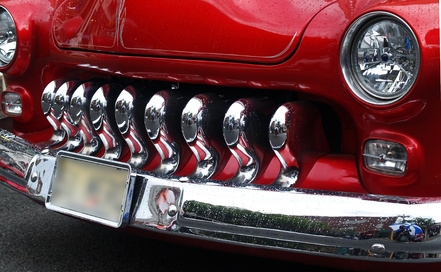
The use of aluminum has become commonplace in the auto industry. Because aluminum weighs much less than steel or iron, it is an ideal metal to work with. The process of painting aluminum is no more or less complex than painting any other metal. However, there are some specific considerations to keep in mind when working with aluminum.
Aluminum produces a surface film naturally. This oxide film must be removed, along with any soil or other contaminants, before the painting process can begin. For this reason, aluminum must go through a special pretreatment process that is a little more extensive than what other metals are subjected to.
This pretreatment process begins by soaking the metal in an alkaline solution for 90 seconds as a degreaser. This is immediately followed by a fresh water rinse for 60 seconds to clear away all traces of alkaline. This is followed by a 90-second bath in iron phosphate that is mixed with fluoride, and again, a 60-second fresh water rinse follows. The iron phosphate and fluoride will etch the surface of the metal so the paint will adhere.
Painting aluminum requires a coat of primer to be applied before the paint. The primer can more easily stick to the etched surface of the metal, and provides a base coat for the paint to adhere. Primer also provides an additional moisture barrier to prevent the weather from flaking the paint from beneath.
When painting aluminum surfaces, it is important to use a primer that is specially formulated for aluminum. Most primer products that are designed for aluminum carry the name "Aluminum Oxide Primer." These can be found in most any paint store or automotive paint supply company.
Painting the aluminum is a very straightforward process that is no different from painting any other surface. For automotive purposes, a dry powder coat paint process is typically used. This process uses compressed air to coat the surface with a powder form of the paint. The paint is then heated with lamps to harden onto the surface.
For do-it-yourself projects where a factory look isn't as important, you can go the cheaper route of spraying the paint onto the surface with an electric spray gun. You will need to apply 3 to 5 coats, allowing each to dry completely before applying the next. You will also need to apply a high-gloss clear coat at the end, which serves as the paint's only layer of protection from the effects of weather.